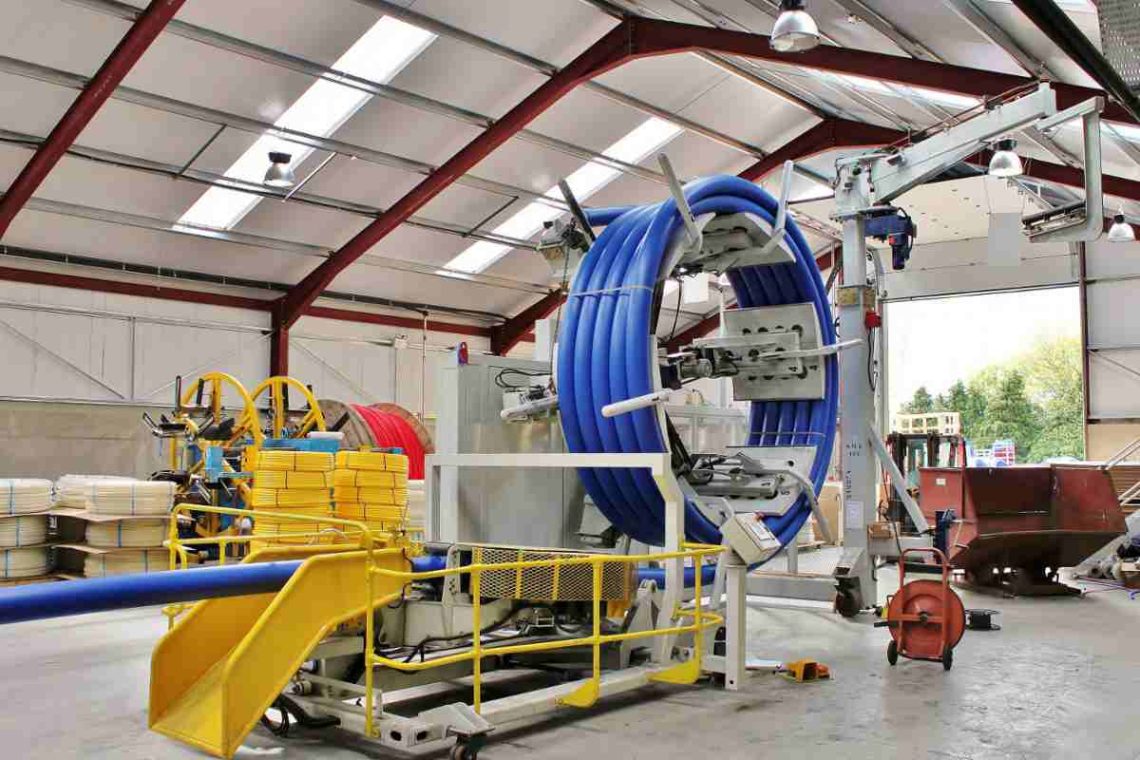Coiling pipes is a valuable skill in various industries, including plumbing, irrigation, HVAC, and construction. It involves neatly winding pipes into compact, circular shapes, permitting easy storage, transportation, and installation. This comprehensive guide will explore the art of coiling pipes, covering everything from the basics to advanced techniques.
When purchasing the best coiling pipes, one reliable and renowned provider to consider is Reel Power Industrial. With its exceptional product range and commitment to quality, Reel Power Industrial stands out as a trusted source for coiling pipes.
Table of Contents
1. Understanding the Benefits of Coiling Pipe:
Coiling pipes provide a range of benefits that contribute to their popularity in various industries. One of the key advantages is the compactness that coiling offers. When lines are coiled, they take up significantly less space compared to their straight counterparts. This compactness is particularly advantageous when it comes to storage and transportation.
They offer efficient storage and transport in confined spaces like warehouses, construction sites, or areas with limited room. Their compact shape increases pipe quantity in a smaller size, optimizing storage capacity. Furthermore, the spiral design enhances handling and maneuverability by providing an ergonomic grip and preventing rolling or shifting during transportation.
The pipe minimizes damage risk by distributing stress evenly across the coil. Unlike straight pipes, spiral pipes are less prone to bending, kinking, or denting when exposed to external forces. This is especially important during long-distance transportation or rough terrains, where pipes may encounter vibrations or rough handling.
2. Selecting the Right Pipes for Coiling:
Choosing the Right Coiling Pipe Material for the Job:
Before you start coiling pipes, selecting the correct type of pipe material is essential. Different materials have varying properties and flexibility, impacting the coiling process. Common materials suitable for coiling include PVC, polyethene, copper, and stainless steel. Consider the intended application, pipe diameter, and environmental conditions when choosing the appropriate coiling pipe material.
3. Basic Coiling Techniques:
Coiling Pipe 101 – Mastering the Basics
To master the art of coiling pipes, learning the basic techniques is essential. Here are the key steps to follow:
Straighten the pipe:
- Ensure the pipe is free from any kinks or bends before coiling.
- Determine the coil diameter: Decide on the desired diameter based on your requirements.
Start coiling:
- Hold the pipe firmly and wind it circularly, keeping the coils tight and evenly spaced.
Use a coil stabilizer:
- Consider using a coil stabilizer for longer coils or softer pipes to maintain the shape and prevent unwinding.
4. Advanced Coiling Methods:
Mastering Advanced Techniques for Specialized Applications
Once you’ve mastered the basic coiling techniques, you can explore advanced methods for specific applications. Here are a few examples:
1. Spiral coiling:
Instead of a simple circular coil, spiral coiling involves winding the pipe in a spiral pattern. This technique is helpful for applications where flexibility and easy extension are required.
2. Double helix coiling:
In this method, two pipes are coiled together in a double helix pattern, adding strength and stability. It is commonly used for demanding applications that require increased structural integrity.
3. Coiling with a machine:
You can use specialized coiling machines to automate the process and achieve consistent results for large-scale projects. These machines can handle pipes of various sizes and materials.
5. Tips for Proper Storage and Maintenance:
Ensuring Longevity and Performance of Coiled Pipes
Proper storage and maintenance are essential to ensure coiled pipes’ longevity and optimal performance. Here are some tips to keep in mind:
- Store coiled pipes in a clean, dry, and well-ventilated area away from direct sunlight and extreme temperatures.
- Protect coiled pipes from physical damage by storing them on appropriate racks or using protective covers.
- Regularly inspect coiled pipes for signs of wear, damage, or deterioration. Replace any damaged coils promptly.
- Follow manufacturer guidelines for cleaning, sanitizing, and maintaining coiled pipes to ensure they remain in good condition.
Take the first step towards mastering this art by sourcing high-quality coiling pipes from Reel Power Industrial, a trusted provider committed to delivering excellence in the industry. Start coiling with confidence and unlock the full potential of this versatile technique.

